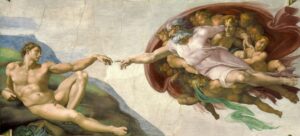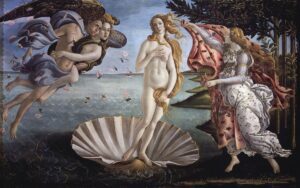The concept of reproduction in art, in some form or another, has existed since the dawn of civilization. Reproduction has a crucial role in the development and evolution of art and it is an important part of any artist’s practice. While reproductions have been primarily used to preserve artwork for future generations, they also serve as a source of inspiration for artists and are essential to understanding the history of art. This article will explore the meaning behind reproduction in art and its importance throughout history.
When it comes to reproduction in art, many people think of copies or imitations rather than originals. While this can often be true, it isn’t always so. Reproduction can refer to any piece that is derived from another piece or artist’s work, whether with permission or without. It could be a painting based on another painting, a sculpture based on a photograph or even a digital image based on an existing artwork. In all cases, though, the original work remains intact and is not changed in any way; only its interpretation has been altered by the artist creating the new piece.
Reproduction has been used as an artistic process since ancient times as a way to create multiple versions of artwork that could be distributed more easily than originals. For example, during the Renaissance period there was an increased demand for classical sculptures which could not meet demand due to their difficulty in production. As such, workshops began producing molds taken from existing works which were then cast into exact replicas which could be sold at lower prices than originals due to their speedier production time frame and their lack of uniqueness compared to authentic pieces. This was one way reproduction was used throughout history as means for profit but also as an important tool for preserving works that would otherwise deteriorate over time if only left with one original copy available for purchase or viewing purposes.

Reproduction also served (and continues to serve) as an important learning tool for aspiring artists who had limited access to masterpieces due to geographical restrictions or financial constraints (or both). By looking at copies made by trained technicians who were able reproduce accurate representations of famous works with great precision into plaster casts (among other materials), students were able study form and composition without having direct access masterpieces located elsewhere; this allowed them much opportunity regardless if they lived near great art cities such as Rome or Paris at that time period.. With modern technologies such as photography this process has become even easier allowing anyone around the world access great works with little cost associated with it – something that would have seemed impossible just decades ago!

In addition reproductions are still being used today by contemporary artists who look back at classic works from centuries past when creating new pieces themselves – something known within academic circles as ‘appropriation’ where images are borrowed from other sources usually without permission but sometimes even credited when possible depending on circumstances! This practice allows contemporary artists expand upon traditional styles while still maintaining respect towards those who came before them – something vital within most creative fields including visual arts but also music/literature among others too! Finally reproductions can also act like bridges between two different cultures; taking what might have been seen originally within one context then re-contextualizing it within another thus making connections between two points never thought possible before..
In conclusion reproduction is fundamental part our artistic evolution providing us not only ways preserve original works but also learn from them while inspiring future generations through bridge building across cultures! It’s no surprise then why reproduction remains integral part modern day life – showing us just how powerful impact can have when combined creativity & technology together!